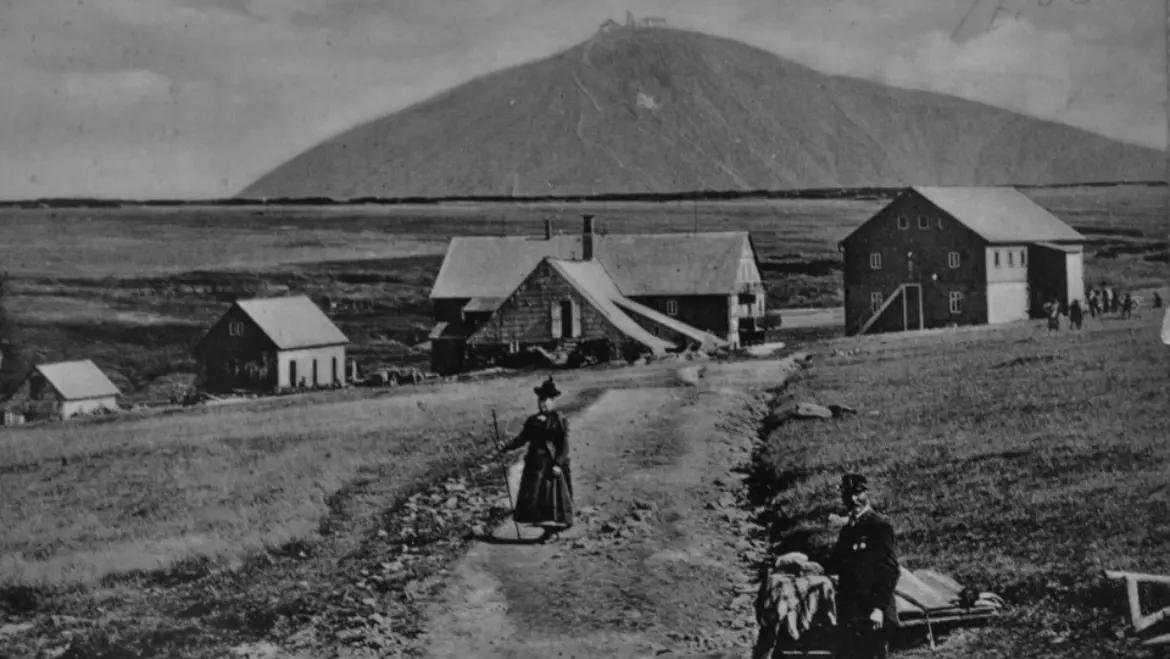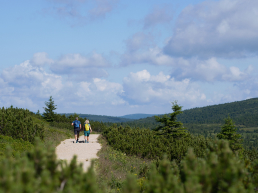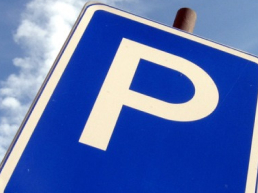

History of Špindlerův Mlýn: From the settlement of the mountains to a tourist destination
Discover the roots of our mountain town
The first settlers, who were attracted to the impenetrable Krkonoše mountains by underground wealth, left behind a rich history full of mining and transformation of the region. In the period up to the 16th century, an impenetrable primeval forest spread here, which gradually gave way to the settlement of prospectors and miners. They came here for iron ore and silver, which led to the development of mining under the leadership of Kryštof of Gendorf. The arrival of a new population from the Alps brought with it a change in the management of the territory - from mining to grazing and agriculture, which laid the foundations for later tourism.
The development of the city was greatly influenced by official mistakes, which transformed the scattered settlements into today's Špindlerův Mlýn. The story of the miller Špindler, whose mill gave the name to the entire area, and the efforts of the locals to establish a church illustrate how unexpected mistakes can affect history. This foundation stone laid in the 18th century led to the development of tourism, when Špindlerův Mlýn became an attractive destination for the first excursionists and later for winter sports lovers who found a home and entertainment here.

Settlement of the mountains - the first inhabitants were attracted by underground wealth
Until the 16th century, the places where Špindlerův Mlýn is located today were only an impenetrable forest. The first people who went into the impenetrable interior of the mountains were prospectors - seekers of ores and precious stones, followed by miners who began to mine the discovered ores. First iron ore and then also silver. Mining and ironworks flourished under Kryštof of Gendorf, the royal mining governor and mining expert, who bought the Vrchlab manor at the foot of the mountains below the Elbe river. He built the largest enterprise of its kind in what was then Bohemia from the iron works in Vrchlab.
The mining and processing of ores consumed a huge amount of wood, and therefore Governor Gendorf summoned experts from the Alpine countries to extract it and float it down the river. Alpine miners and lumberjacks settled here and began to build buildings in the mountains, which are called huts. Because they had experience from their original home, how to raise cattle in the seemingly inhospitable mountains, they started farming in the resulting clearings. The clearings became meadows and pastures, and thus the typical meadow enclaves in the middle of the forests were created, as we can still see them here today. Bodily farming became more important as mineral wealth and timber dwindled. Prospectors and miners were gradually replaced by collectors of medicinal plants and bushmen. The biggest boom in mountain huts only occurred with the arrival of tourism from the second half of the 19th century.

The emergence of a city or what good are official errors
Back in the 18th century, there were only scattered small settlements on the territory of today's Špindlerův Mlýn, whose names are still preserved in the names of city districts, such as Svatý Petr, Bedřichov or Labská. The importance of today's city center grew when, in 1765, the miller Špindler moved his mill here from Svaté Peter, which was washed away by water from the melting snow. The new mill was named, as was customary, after him - i.e. Špindlerův. The fact that the name of this mill became the name of a still non-existent village was the result of an official scam.
The cause was the church. At the end of the 18th century, there was only an old chapel here, where services were held only three times a year. The Augustinian monastery in Vrchlabí took care of the spiritual life of the mountaineers, where at that time there was no road, only a poorly passable road. In addition, after the church reforms of Emperor Joseph II. the number of monks in Vrchlab significantly decreased. The mountaineers therefore began to strive for the establishment of their own church and parish. Among the most active was the miller from Spindleruv Mlyn, with whom the mountaineers also wrote down humiliating requests to the emperor. Their signatures stated - written in Spindleruv Mühle (German: Spindlermühle). And since similar names for towns and villages are common in German-speaking countries, a mistake was made and the permission to build a church in the village of Špindlerův Mlýn was returned. The citizens accepted the new name and started building rather than argue with the imperial officials. It was not the only clerical error in this case. On the imperial decree, the letter "r" strayed from the name Spindlermühle. However, the locals got used to the new, albeit incorrect name, and efforts in the 20th century to correct the name and return the unfortunate "r" met with irritated resistance from the residents.

The beginnings of tourism - from poor farmers to hoteliers
Local shepherds and local gamekeepers sometimes provided shelter and hospitality to occasional pilgrims who visited these parts. However, the beginning of tourism in Špindlerův Mlýn is traditionally dated back to 1865, when four travelers from Wrocław stayed here. They liked it here so much that they started going here regularly with their friends.
Locals soon recognized the tourist potential of this place, they began to expand the huts and build excursion routes. One of the most popular was the route over Dívčí lávky - Labský dolem to the Labská waterfall and the Labská bouda. The owner of the Jilemnice manor, Count Jan Harrach, had it built at his own expense in 1871, after whom it is also named.
In the years 1889-1891, the owner of the Vrchlab estate, Countess Aloisie Černín-Morzínová, established another path on the opposite side of the Girl's Bridge, upstream of the White Elbe, which was named in honor of the first chairman of the Austrian Krkonoše Association, the dean of Vrchlab Wenzel Weber. The construction of the road from Vrchlabí in 1872 contributed significantly to the increased number of tourists. Buda started to improve their sheds and expand the range of services, poor buildings often became exhibition hotels. New professions emerged, for example Krkonoše mountain guides and porters. On a wooden backpack, tourists could not only have their luggage carried up the hills, but also themselves.

Winter fun and the beginnings of skiing
Initially, the tourist season took place mainly in the summer. But already in the second decade of the 19th century, the first commercial descents were held in the eastern Giant Mountains (from Pomezní buda to Kowar). These were sleds with large "horns" in the front, which lumberjacks brought with them from the Alps and on which they originally hauled wood from the mountains in winter. The new attraction quickly spread to Špindlerův Mlýn. It was mainly ridden from Petrovka and Špindlerovka (the toboggan track runs from there to this day), but also from other huts on the hills. In 1909, a hydroelectric power plant was built near the Count's sawmill, and the next year an electric sledge lift was put into operation. Sledding on horns or on sports sleds was the king of winter fun at the end of the 19th century.
When the Kraus brothers appeared on Petrovka in 1880, apparently with the first skis in the Giant Mountains, none of the onlookers thought that they were standing at the birth of a new era. It took almost twenty more years before the fad became a practical means of transport and a new sport. The Vrchlab factory worker Guido Rotter, who in 1899 donated skis to all mountain schools in the Vrchlab region, and Count Jan Harrach, who equipped his foresters with them, contributed to this. As early as 1900, troops were trained in their use in Špindlerův Mlýn. Today, the offer of winter fun in Špindlerův Mlýn is much more diverse.









